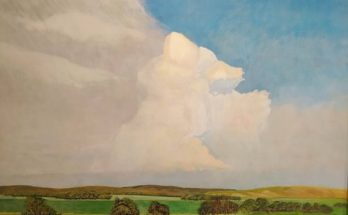By Rodrigo Diaz Guerrero
I met Óscar Martínez Heredia (Mexico City, 1971) almost two decades ago when I had recently arrived in San Miguel de Allende for the first time. Throughout these years, I have witnessed—like many of us who live here—his work and his passions, his kind and unique character, and his charisma. Much of his work is the expressive, psychological, and emotional study of people. This resulted in a body of work of more than seven years of self-portraits—raw material for the award-winning short film «Oscar.» It is a collaboration with filmmaker Lorenzo Shapiro and incorporates 350 of his self-portraits. The film was presented at more than a dozen film festivals around the world, including the Cannes Film Festival (France), the New York Independent Film Festival (United States), the New Renaissance Film Festival (Holland), and the Khorshid Film Festival (Iran). It should be noted that the music in the short film was authored by Martinez himself (Darbuka, charcoal, tabla, cajón, watercolor, gouache, flamenco and jazz). We talked briefly with him about his tasks and the ideas that motivate him.
RDG: It is said that self-portraits are a declaration of intent, a manifestation of feeling, and a way of being from intimacy. What can you tell us about this, what reflections moved you to make that great series of self-portraits?
OMH: Self-portraits allow me to see from the outside, face myself, experiment with diverse and varied materials, and expose my vulnerability. In the process of making my daily self-portraits, I felt that something was missing—when I looked at a drawing I was satisfied, but I saw the next one and felt the need to go further and find something that would give them continuity that would connect them. It was not about one but about all of them. It was then that I realized that I had created a vast registry of drawings and it was a constantly growing archive that inspired me with the idea of animating them. Thus began this experiment that I was finally able to see how each emotion and expression could gradually merge creating a continuous and fluid transformation. I achieved a continuity to my self-portraits as a reflection of life itself.
Also, in this great process, I discovered that music played a fundamental role in this experience, and I felt the need to create my own music. Using sounds from a painting studio—the crackle of charcoal when making a line, the rhythm of an eraser, the sound of a pencil scribbling with different rhythms in a drawer that in harmony, with the changes of expression of the self-portraits, added an additional layer of emotion. Each sound and rhythm intertwined with the moving images generating a multisensory experience. It was a process that allowed me to go beyond the statics of the paper and explore the infinite possibilities of expression.
RDG: We know that you are very active now with a “Son Jarocho” project. What motivated you to make that leap from painting to music?
OMH: Music always accompanies me and studying it takes time. It is difficult as a musician and painter but not impossible. The music of “Son” has opened up the possibility for me to feel and understand many connections with other rhythms and cultures which is one of the projects where I return to painting. The connection with other music in the “Son” is reflected in the instruments such as the jarana requinto or leona and they are cousins of other instruments such as the baroque guitar, the lute, and some North African instruments played with a bull horn. The handmade instruments have a meticulous attention to detail— the use of special woods is combined to produce unique instruments with a special color in the architecture of the sound that arouses in me a special interest in Luthería and calls my attention as true sculptures—vibrant and loud.




